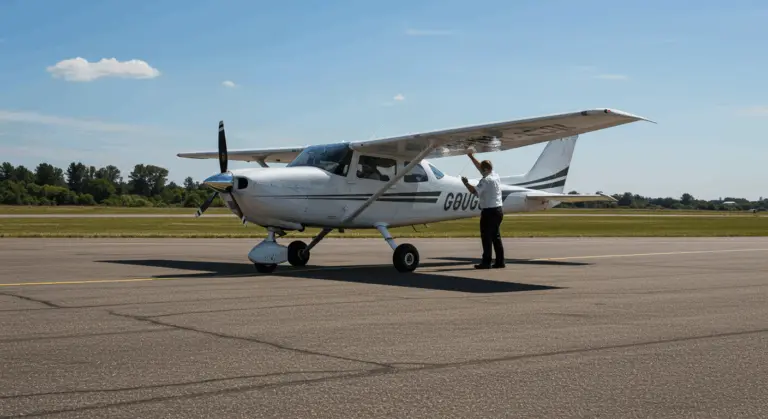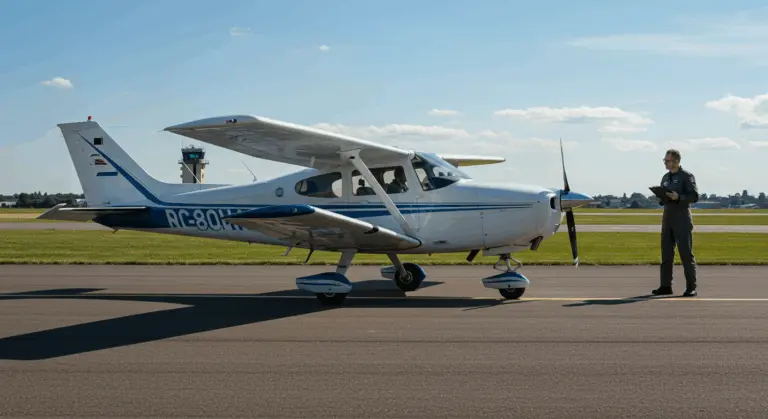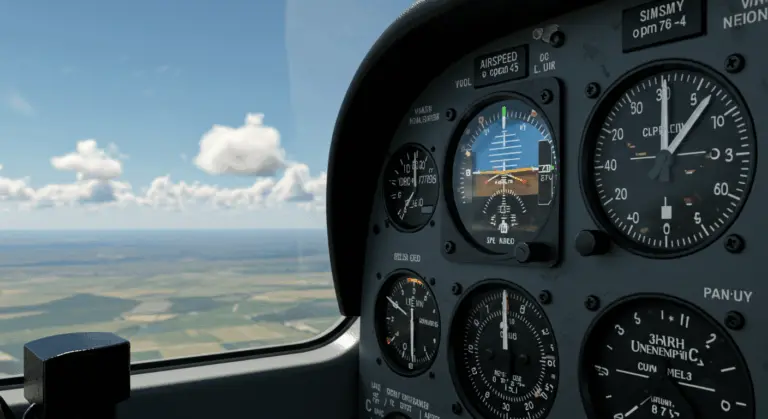Understanding the Somatogravic Illusion in Aviation
What is the Somatogenic Illusion?
The somatogenic illusion represents one of aviation’s most dangerous perceptual traps—a false sensation of pitching up or down triggered by acceleration or deceleration forces. This phenomenon stems from how our inner ear’s vestibular system misinterprets the forces acting upon us during flight.
The danger lies in how the fluid within our inner ear’s vestibular system simply cannot differentiate between acceleration forces and gravity itself. When an aircraft surges forward during takeoff, pressing pilots firmly back into their seats. Their brain, receiving these powerful sensations, becomes convinced the aircraft’s nose is climbing skyward. Yet the instruments tell a completely different story, showing perfectly level flight.
This illusion is particularly dangerous in conditions with poor external visibility (e.g., at night, in clouds, or over water) when pilots lose their visual anchor to reality. Without visual cues to contradict the feeling, pilots often surrender to their misleading sensations rather than trusting their instruments—a decision that can prove catastrophic.
Causes of Somatogenic Illusion
The somatogenic illusion’s roots trace back to how acceleration forces affect the utricle and saccule—specialized structures within the vestibular system of the inner ear. Within these organs lie microscopic calcium carbonate crystals called otoliths, which respond to gravitational and acceleration forces, constantly signaling to our brain about where we stand—or fly—in three-dimensional space.
Certain flight scenarios commonly trigger this illusion:
-
Forward Acceleration (Head-Up Illusion): During takeoff or a go-around, the vestibular system misinterprets the force as a pitch-up attitude. Pilots may reflexively push forward on the controls, potentially driving their aircraft toward the ground—particularly devastating at low altitudes.
-
Rapid Deceleration (Head-Down Illusion): When reducing power or deploying speed brakes, the pilot feels a nose-down pitch. This sensation can provoke an ill-timed nose-up correction, risking an aerodynamic stall.
-
Inversion Illusion: An abrupt transition from a climb to level flight can create a sensation of tumbling backward as vertical acceleration suddenly decreases.
Effects of Somatogenic Illusion on Pilots
When somatogenic illusion strikes, its effects affect a pilot’s entire decision-making process with potentially devastating consequences. When experiencing this illusion, pilots face a significant cognitive disconnect between what their body senses and what is actually happening to the aircraft. This internal war between sensation and reality creates immediate, life-threatening challenges.
The illusion doesn’t stop at physical reactions—it creates psychological challenges as well. Pilots find themselves battling sensations that feel completely real. This internal struggle dramatically increases cognitive workload precisely when clear thinking matters most, potentially compromising critical decisions during the most demanding phases of flight.
Aviation accident investigators have repeatedly identified somatogenic illusion as a contributing factor, especially during night or low-visibility takeoffs. The tragic outcome? Controlled Flight Into Terrain (FIT) accidents, where perfectly airworthy aircraft are flown into the ground by pilots trusting their deceived senses over their reliable instruments.
Preventing Somatogenic Illusion
Building an effective defense against somatogenic illusion demands a combination of training, discipline, and technology. Key strategies include:
-
Trusting Instruments: The most important defense is Unwavering faith in flight instruments, especially the attitude indicator, over bodily sensations.
-
Maintaining a Disciplined Scan: Develop a consistent practice of cross-checking primary flight instruments to verify the aircraft’s actual state, particularly in low-visibility conditions.
-
Careful Flight Planning: Whenever feasible, make power changes and gradual, especially when visibility turns poor.
-
Crew Resource Management (CRM): In multi-crew operations, strategic task division ensures one pilot focuses closely on instruments while their colleague watches for any telltale signs of illusion-induced control inputs.
-
Simulator Training: Experiencing the illusion in a safe, simulated environment helps pilots recognize the sensations and practice correct responses.
-
Technology: Enhanced flight displays, Head-Up Displays (HUD’s), and Terrain Awareness and Warning Systems (TAWS) provide clearer information and alerts.
Common Aviation Illusions Related to Somatogenic Illusion
The somatogenic illusion doesn’t operate in isolation—it’s part of a group of sensory deceptions that can affect pilots. Understanding how these illusions interconnect creates a more robust defense against spatial disorientation’s many faces. Aviation professionals often rely on the mnemonic “FLAGS” to catalog the eight most treacherous illusions that pilots encounter.
-
Inversion Illusion: An abrupt change from a climb to level flight creates a feeling of tumbling backward. Like its somatogenic cousin, this illusion exploits our brain’s confusion about linear acceleration forces.
-
Coriolis Illusion: Tilting the head during a turn causes an overwhelming sensation of tumbling, triggered by angular rather than linear acceleration forces.
-
Elevator Illusion: An up draft or downdraft creates a false sensation of climbing or descending, spawned by external air mass movements.
-
False Horizon Illusion: A visual illusion where a pilot mistakes a sloping cloud deck, lights, or terrain for the actual horizon.
-
The Leans: Following an extended turn, leveling the wings creates the unsettling sensation of banking in the opposite direction—the inner ear’s delayed response to rotation.
-
Autokinesis: A visual illusion where a stationary light viewed against a dark background appears to move.
-
Graveyard Spiral: During an unrecognized spiral dive, a pilot’s instinctive pull on the controls tightens the spiral—a dangerous situation that has caused many accidents.
Conclusion: The Importance of Awareness
Mastering the somatogenic illusion is fundamental to of aviation safety precisely because this deception feels so completely convincing and feels entirely real. The best defense is A three-pronged approach combining deep technical understanding, unwavering procedural discipline, and the discipline to trust cold instruments over warm instincts. This is what defines good airman ship.







